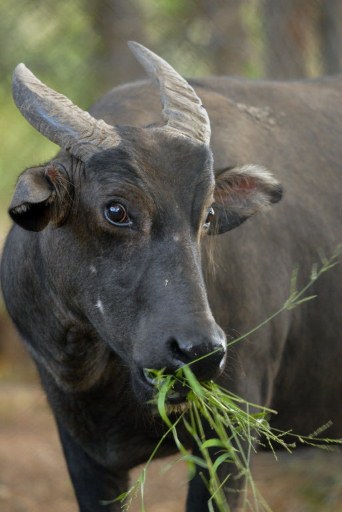Tamaraw population growing
MANILA, Philippines—The population of the tamaraw, one of the world’s rarest animals, has grown to its largest since efforts to save them from extinction began, conservationists said on Friday.
An annual survey counted 382 tamaraws in a protected mountain area this year, an increase from 345 in 2013, according to data from the World Wildlife Fund (WWF).
The tamaraw, famed for its distinct V-shaped horns, can be found only in the mountains of Mindoro island.
The stocky tamaraw, with its chocolate-brown coat, runs wild in the forest and weighs half as much as the more common carabao, which is used by farmers to plough rice fields.
“The tamaraw is the flagship species of the Philippines. It is our moral obligation and international commitment to preserve them,” forest ranger Rodel Boyles, who heads a joint government and private sector conservation effort, told AFP (Agence France-Presse).
Article continues after this advertisement“If they are not protected, the species might get wiped out in five years,” he said.
Article continues after this advertisementThe tamaraw is considered “critically endangered”—two steps away from extinction—by the International Union for Conservation of Nature.
Hunting and the destruction of their habitat to make way for grazing areas for cattle led to their near decimation, as the population fell from 10,000 in the 1900s to just 154 by 2000, according to the WWF.
The government and private sector’s Tamaraw Conservation Program aims to double the dwarf buffalo’s population from 300 in the mid-2000s to 600 by 2020, Gregg Yan, a local spokesperson for the WWF, told AFP.
This requires ramping up forest patrols to ward off poachers and installing hidden cameras in the mountains to better understand the behavior of the beast, Yann said.
A team of 30 forest rangers patrol a 15-hectare portion of a mountain that is considered the buffalo’s “core habitat”, Boyles said.
“They are hunted down for food and trophy. When a species is rare, their price in the black market also goes up,” he said.
Boyles said conservationists had held meetings with locals to discourage them from eating tamaraw meat.
“People also have this misconception that the flesh of wild animals taste better than farmed ones,” he said.
The effort is paying off as the tamaraw population has been increasing every year for the last 12 years, WWF data shows.
This year’s survey also showed an increased number of young tamaraws, indicating that they have been reproducing in the wild, Boyles said, adding that past attempts at captive breeding have failed.
“We are hopeful that their numbers will continue increasing,” he said. AFP
RELATED STORIES
